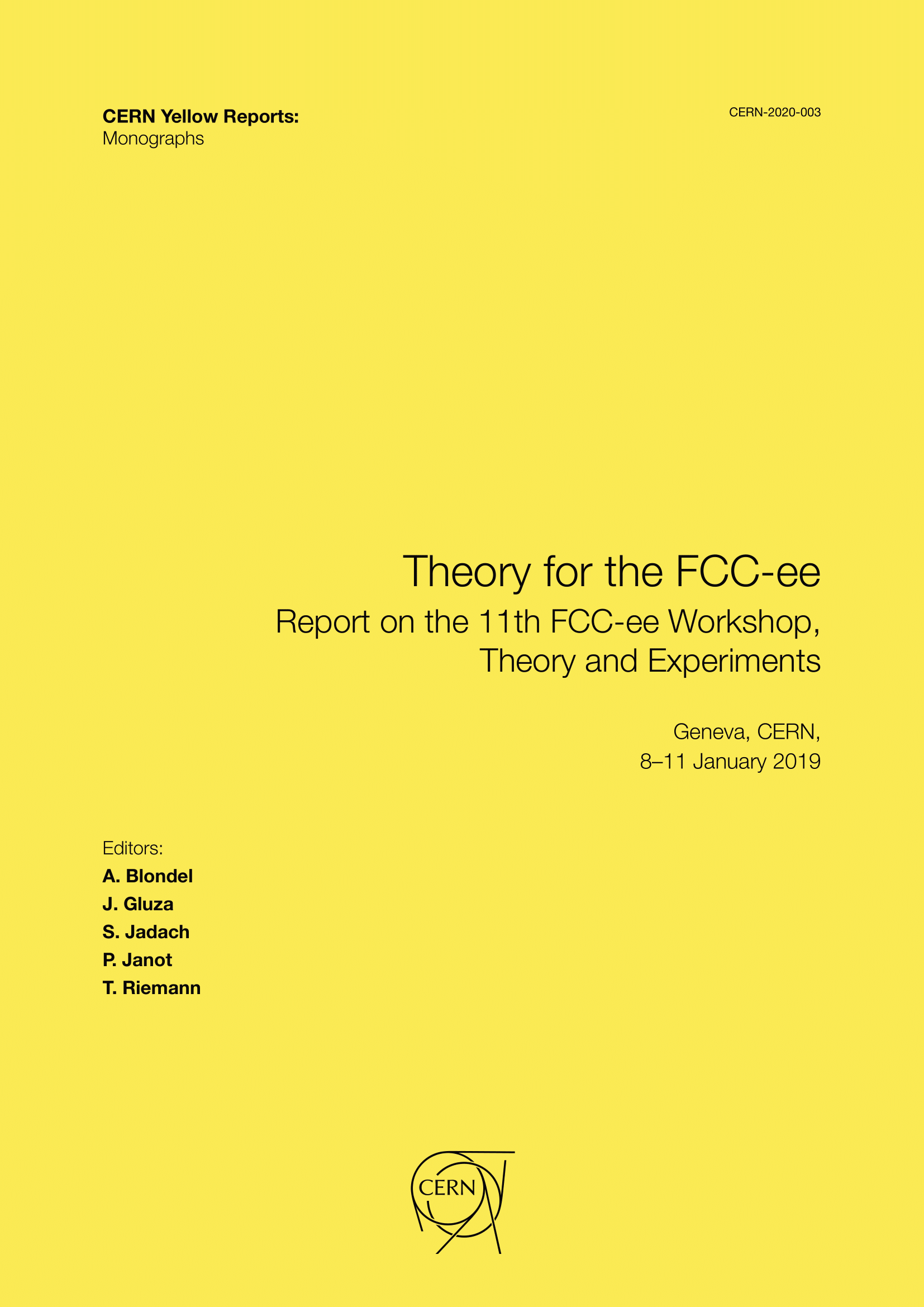Vol. 3 (2020): Theory for the FCC-ee: Report on the 11th FCC-ee Workshop, Theory and Experiments, CERN, Geneva, 8–11 January 2019

Eds. A. Blondel, J. Gluza, S. Jadach, P. Janot and T. Riemann
The Future Circular Collider (FCC) at CERN, a proposed 100 km circular facility with several colliders in succession, culminates in a 100 TeV proton–proton collider. It offers a vast new domain of exploration in particle physics, with orders-of-magnitude advances in terms of precision, sensitivity, and energy. The implementation plan published in 2018 foresees, as a first step, an electroweak factory electron–positron collider. This high-luminosity facility, operating at centre-of-mass energies between 90 and 365 GeV, will study the heavy particles of the Standard Model (SM), Z, W, and Higgs bosons, and top quarks with unprecedented accuracy. The physics programme offers great discovery potential: (i) through precision measurements, (ii) through sensitive searches for symmetry violations, forbidden, or extremely rare decays, and (iii) through the search for direct observation of new particles with extremely small couplings. The electroweak factory e+e- collider constitutes a real challenge to the theory and to precision calculations, triggering the need for the development of new mathematical methods and software tools. A first workshop in 2018 focused on the first FCC-ee stage, the Tera-Z, and confronted the theoretical status of precision Standard Model calculations on the Z boson resonance to the experimental demands. The second workshop, in January 2019, extended the scope to the next stages, with the production of W bosons (FCC-ee-W), the Higgs boson (FCC-ee-H), and top quarks (FCC-ee-tt). In particular, the theoretical precision in the determination of the crucial input parameters, αQED, αQCD, MW, and mt, at the level of FCC-ee requirements was thoroughly discussed. The requirements on Standard Model theory calculations were spelt out, so as to meet the demanding accuracy of the FCC-ee experimental potential. The discussion of innovative methods and tools for multiloop calculations was deepened. Furthermore, phenomenological analyses beyond the Standard Model were discussed, including effective theory approaches. The reports of 2018 and 2019 serve as white papers of the workshop results and subsequent developments.
